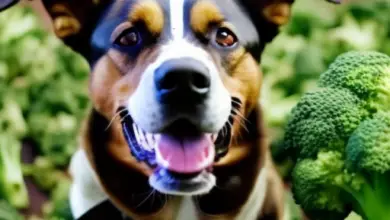Can Dogs Eat Penuts
Have you ever wondered if your furry friend can indulge in the deliciousness of peanuts? Well, the answer is yes! Dogs can eat peanuts and they may even offer some surprising health benefits.
From providing essential nutrients to promoting a shiny coat, peanuts can be a tasty and nutritious addition to your dog’s diet. However, it’s important to understand the potential risks and how to introduce them safely.
So let’s dive into this nutty topic and explore everything you need to know about feeding peanuts to dogs.
Key Takeaways
- Peanuts are high in protein and essential for muscle development and repair.
- Peanuts contain vitamins B3 and E, as well as minerals like magnesium and potassium.
- Peanuts have healthy fats like monounsaturated fatty acids, which improve heart health.
- Peanuts should be introduced slowly and in moderation, and dogs should be monitored for any adverse reactions.
Potential Health Benefits of Peanuts for Dogs
You might be surprised to learn that peanuts can actually provide some potential health benefits for your dog. While it’s true that peanuts are high in fat, they also contain important nutrients that can contribute to your dog’s overall well-being. Peanuts are a good source of protein, which is essential for muscle development and repair. They also contain vitamins B3 and E, as well as minerals like magnesium and potassium.
The nutritional value of peanuts extends beyond their macronutrients. They are rich in antioxidants, such as resveratrol, which can help boost your dog’s immune system and protect against certain diseases. Additionally, peanuts have been linked to improved heart health due to their content of healthy fats like monounsaturated fatty acids.
It’s important to note that while peanuts can offer health benefits for dogs, moderation is key. Too many peanuts can lead to weight gain or digestive issues. It’s best to offer them in small quantities as an occasional treat or mix them into your dog’s regular food.
If you’re considering incorporating peanuts into your dog’s diet, consult with your veterinarian first. They will be able to assess your dog’s specific dietary needs and determine if peanuts are a suitable addition.
Risks and Dangers of Feeding Peanuts to Dogs
Feeding peanuts to your furry friend can present various risks and dangers. While peanuts in moderation can be a healthy snack for dogs, it is important to understand the potential hazards associated with them. One popular way of incorporating peanuts into a dog’s diet is through peanut butter, which can be used as a tasty treat or as a way to administer medication. However, it is essential to choose peanut butter that does not contain xylitol, an artificial sweetener that can be toxic to dogs.
Here is a table summarizing the risks and dangers of feeding peanuts to dogs:
| Risks and Dangers | Explanation | Precautions |
|---|---|---|
| Potential choking hazards | Peanuts are small and hard, making them prone to causing choking in dogs. It is important to ensure that peanuts are chopped into small pieces or ground before feeding them to your dog. | Always supervise your dog while they are eating peanuts. |
| Allergic reactions | Just like humans, some dogs may have allergies or sensitivities to peanuts. Symptoms of an allergic reaction include itching, swelling, vomiting, or diarrhea. If you suspect your dog has an allergy, consult with a veterinarian before feeding them any more peanuts. | Introduce new foods slowly and monitor for any adverse reactions. |
How to Safely Introduce Peanuts Into Your Dog’s Diet
When introducing peanuts to your pup’s diet, it’s important to start with small amounts and monitor for any adverse reactions. Dogs can eat peanuts in moderation, but just like with any new food, it’s crucial to introduce them slowly. Start by offering your dog a few crushed or chopped peanuts as a treat and observe their reaction. If there are no signs of allergies or digestive upset, you can gradually increase the amount over time.
To train your dog to eat peanuts, use positive reinforcement techniques such as praise and rewards. Offer a peanut as a reward during obedience training sessions or when teaching new tricks. This will help create a positive association with the taste of peanuts and encourage your furry friend to enjoy them.
Incorporating peanuts into homemade dog treats is another great way to introduce this nutritious snack into your dog’s diet. You can try making peanut butter-based treats by mixing peanut butter with ingredients like oats, pumpkin puree, or banana. Alternatively, you could add finely ground peanuts directly into the dough of homemade biscuits or cookies.
Remember that while peanuts are generally safe for dogs, they should always be given in moderation and without added salt or flavorings. If you have concerns about allergies or other health issues related to feeding peanuts to your pup, it’s best to consult with your veterinarian before making any dietary changes.
Signs of Peanut Allergies in Dogs
If your furry friend exhibits symptoms such as itching, swelling, or difficulty breathing after consuming peanuts, it could be a sign of a peanut allergy. Peanut allergies in dogs are not uncommon and can cause discomfort and distress for your beloved pet. It is important to recognize the common peanut allergy symptoms in dogs so that you can seek appropriate treatment.
When a dog has a peanut allergy, their immune system overreacts to the proteins found in peanuts. This leads to an allergic reaction, which can manifest in various ways. Some dogs may experience intense itching and scratching, particularly around the face and paws. Swelling of the face, lips, or throat may also occur, making it difficult for your dog to breathe properly. Other signs include vomiting, diarrhea, hives, or even collapse.
If you suspect that your dog has a peanut allergy based on these symptoms, it is crucial to consult with your veterinarian for proper diagnosis and guidance on how to treat peanut allergies in dogs. Treatment options may include avoiding all forms of peanuts and products containing peanuts in their diet. Your vet may also prescribe antihistamines or recommend other medications to alleviate symptoms during an allergic reaction.
Remember that early detection and intervention are key when dealing with any type of food allergy in dogs. By being aware of the common signs of peanut allergies and seeking professional help promptly if needed, you can ensure the well-being of your four-legged companion.
Alternative Nut Options for Dogs
Consider incorporating alternative nut options into your furry friend’s diet to provide them with a variety of nutrients and flavors. While peanuts are safe for dogs to consume, there are other nuts that can offer additional nutritional value for your canine companion. Nuts such as almonds, cashews, and pistachios can be a healthy addition to their diet when given in moderation.
Almonds are a great source of vitamin E, which promotes healthy skin and coat. Cashews provide essential minerals like zinc and magnesium that support immune function and bone health. Pistachios contain antioxidants that help fight inflammation and boost heart health.
When incorporating nuts into your dog’s diet, it is important to remember that moderation is key. Nuts should be given as a treat or added to homemade dog treats rather than being the main component of their meals. They should always be unsalted and without any added flavorings or coatings.
To incorporate nuts into homemade dog treats, you can grind them into a fine powder or chop them finely depending on the texture you desire. You can then mix them with other ingredients like oats, pumpkin puree, or peanut butter to create delicious and nutritious treats for your furry friend.
Remember to always consult with your veterinarian before making any changes to your dog’s diet, including adding nuts as an alternative option.
Frequently Asked Questions
Can Dogs Eat Salted or Flavored Peanuts?
Yes, dogs can eat peanuts, but it’s important to avoid salted or flavored ones. Dogs may have allergies to peanuts and the portion size should be small as a treat, not a regular meal.
Is It Safe to Give Peanut Butter to Dogs?
Giving peanut butter to dogs can be safe and beneficial for their health. It’s like spreading a tasty treat on a bone! However, if you’re looking for alternatives, consider pumpkin or plain yogurt.
Can Peanuts Cause Pancreatitis in Dogs?
Peanuts can potentially cause pancreatitis in dogs. It’s important to be aware of this if your furry friend has a history of pancreatitis or peanut allergies. Always consult with your vet before feeding them peanuts.
Are There Any Age Restrictions for Feeding Peanuts to Dogs?
When it comes to feeding peanuts to your dog, age restrictions should be considered. While peanuts can provide health benefits like protein and healthy fats, consult with your vet to ensure it’s suitable for your pup’s age.
Can Dogs Eat Peanut Shells?
You should avoid giving your dog peanut shells as they can pose potential dangers such as choking or intestinal blockage. Instead, safely introduce peanuts into their diet by offering small amounts without the shell.
Conclusion
In conclusion, dogs can safely enjoy peanuts in moderation as part of a balanced diet. The potential health benefits of peanuts for dogs include providing essential nutrients such as protein, healthy fats, and vitamins.
However, it’s important to be aware of the risks and dangers associated with feeding peanuts to dogs, such as the possibility of choking or allergies. To introduce peanuts into your dog’s diet safely, start with small portions and observe any signs of peanut allergies.
Interestingly, did you know that approximately 67% of dogs do not experience any adverse reactions when consuming peanuts? Remember to consult with your veterinarian before making any changes to your dog’s diet.

A pet food consultant with a background in animal nutrition. He has written a book titled “Ruined by Excess, Perfected by Lack: The Paradox of Pet Nutrition.”





